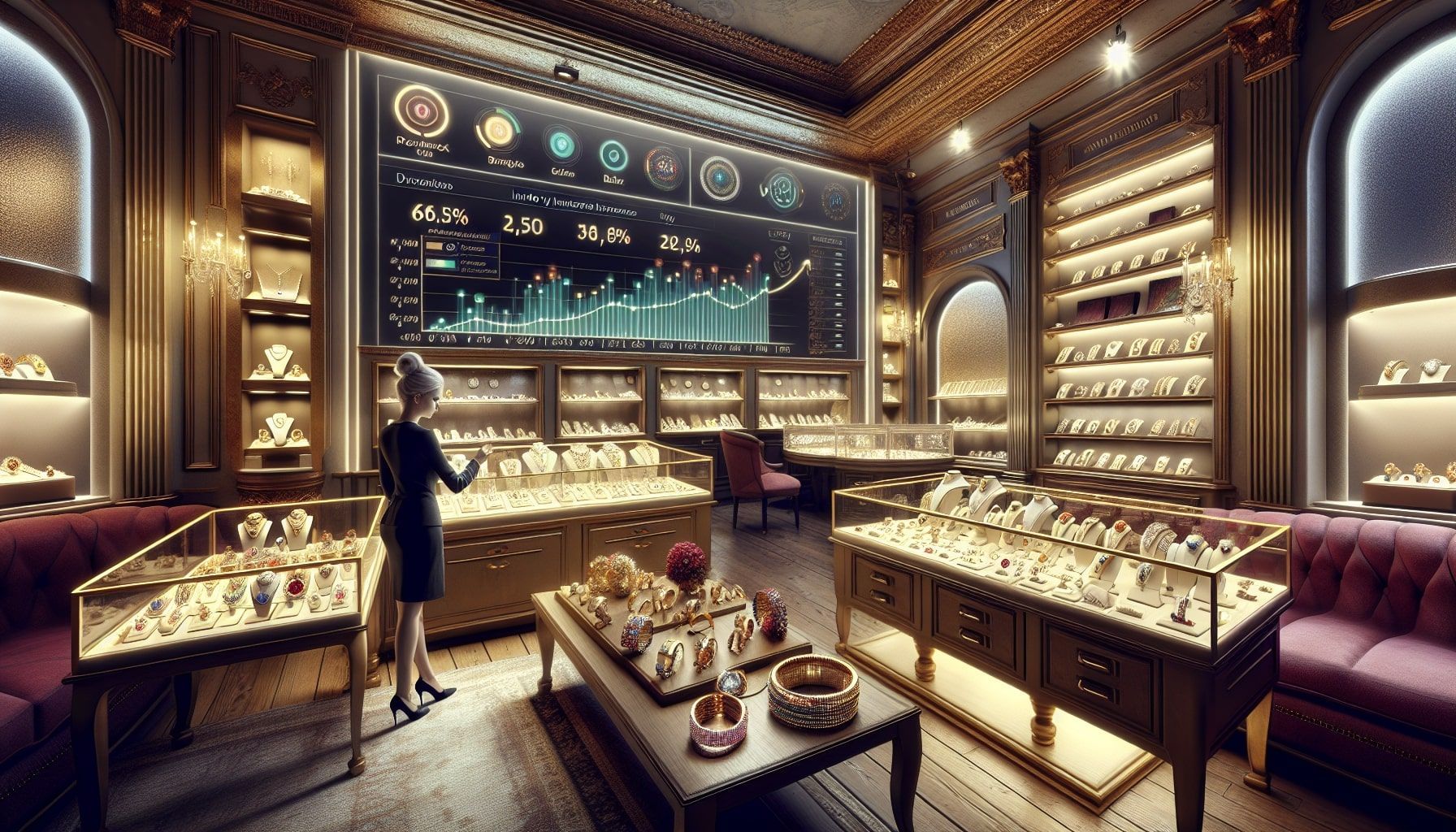Temperature and Humidity Control in Jewelry Warehouses
The importance of temperature and humidity control in warehouses
Introduction to temperature and humidity control
For jewelers , managing the right environment in their warehouses is essential. The quality and integrity of precious metals and gemstones are heavily dependent on the conditions in which they are stored. Temperature and humidity control are therefore crucial to prevent damage and extend the lifespan of the inventory.
In this article, we discuss why temperature and humidity control is so important for jewelers and how they can implement it effectively.
Why temperature and humidity control is important
The storage of jewelry requires precise regulation of the environment. Fluctuations in temperature or humidity can lead to corrosion, discoloration, and other damage to your valuable inventory.
Effect on precious metals
Precious metals such as gold, silver, and platinum are generally resistant to oxidation, but they can be affected by high humidity levels. This can result in a dull appearance or even degradation. This also applies to jewelry that is mounted with other materials, such as leather or plastic.
Pro tip: It is advisable to keep the humidity in your warehouse below 50% to minimize oxidation and corrosion.Effect on gemstones
Gemstones such as diamonds, rubies, and emeralds can also suffer from improper environmental conditions. High humidity levels can lead to mold growth on naturally formed stones and can affect the clarity and color of synthetic stones.
Pro tip: Use a hygrometer to monitor the humidity in your warehouse and ensure it remains stable throughout the day.The right temperature settings
The ideal temperature for storing jewelry is often between 18°C and 24°C. This ensures that the structure of the metal and the facets of the stones remain optimal.
Consequences of temperature fluctuations
Fluctuations in temperature can cause materials to expand and contract. This can weaken adhesive bonds , causing gemstones to become loose. For gold and silver, irregular temperature changes can even distort the product.
Pro tip: Maintain a constant temperature using a thermostat and avoid direct sunlight on storage areas.How to implement temperature and humidity monitoring
To effectively ensure temperature and humidity control, jewelers need to implement certain systems and processes.
Monitoring equipment
Invest in advanced monitoring systems that continuously measure temperature and humidity. There are now digital sensors available that can provide you with real-time data and alert you to deviations.
Pro tip: Consider choosing a system that you can also monitor remotely via your smartphone.Keep a log
Keeping a log helps not only with monitoring but also provides insight into trends that can assist you in planning maintenance. You can record and analyze changes in temperature or humidity.
Pro tip: A digital logbook makes it easier to analyze data and generate reports for the future.Preventive measures to minimize damage
In addition to monitoring, there are also various preventive measures that jewelers can take to minimize damage to their inventory.
Use of dehumidifiers
In areas with higher humidity, using dehumidifiers can have a significant impact on maintaining the right conditions. This prevents mold growth and other moisture-related issues.
Pro tip: Choose a dehumidifier with automatic settings so it can operate based on the measured humidity.Regular maintenance and inspections
Schedule periodic inspections to ensure that all your equipment is functioning as intended. This includes both temperature and humidity systems, as well as the physical condition of your inventory.
Pro tip: Develop a maintenance plan and stick to it to prevent unexpected failures.Technological tools for better control
With advancements in technology, there are more sophisticated solutions available that can help jewelers with temperature and humidity management.
Smart Home Technology
Through smart home technology, jewelers can give their warehouses a highly advanced and user-friendly configuration. These systems can automatically detect temperature and humidity variations and respond accordingly.
Pro tip: Integrate with other security systems for a comprehensive approach to warehouse security.Data analysis tools
Data analysis tools can help gather information about the condition of your warehouse over time. By analyzing trends and patterns, jewelers can apply information systems that meet their specific needs.
Pro tip: Use data analysis to better manage your inventory, including determining which products are most vulnerable under unfavorable conditions.Conclusion
The importance of temperature and humidity control in warehouses cannot be overstated, especially for jewelers. By investing in the right equipment, monitoring systems, and preventive measures, jewelers can ensure that their inventory remains safe and in top condition. Make sure to regularly evaluate and optimize this topic. The investment in a well-controlled environment will pay off in the durability and quality of your jewelry.

Take your store to the next level
Start automating and digitizing your store processes today. PrismaNote helps retailers with this. Discover what we can do for you via the menu above.
- George



















































